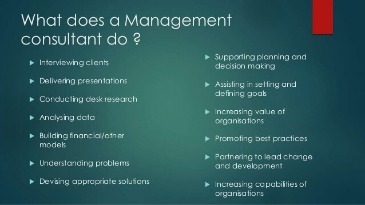
Dow Jones Industrial Average futures dropped by 137 points, or 0.44%. S&P 500 and Nasdaq 100 futures declined 0.51% and 0.60%, respectively. Yields move inversely to prices, and a basis point is equal to 0.01%. The yield on the https://currency-trading.org/software-development/3-types-of-crms-and-how-to-use-them/ U.S. 2-year Treasury note briefly reached 3.901%, before pulling back slightly to 3.8921% in Asia’s morning trade. The pan-European Stoxx 600 was down 1.2% in the first hour, and U.K., French and German indexes all fell.
Why FedEx Stock Is Plummeting Today – The Motley Fool
Why FedEx Stock Is Plummeting Today.
Posted: Fri, 16 Sep 2022 07:00:00 GMT [source]
Prior to the report, there had been some optimism among analysts. In April, FedEx announced its DRIVE initiative to consolidate its FedEx Express, FedEx Ground, FedEx Services and other operating companies into the single Federal Express Corporation under the FedEx brand. FedEx expects DRIVE to generate $4 billion in permanent cost reductions in 2025 after the transition is fully implemented in June 2024. FedEx announced late Tuesday its earnings fell 28% in Q4, vs. an average 27% over the prior three quarters. The company’s sales declines accelerated for a third straight quarter, and for a third consecutive period missed Wall Street views. Airfreight and delivery giant FedEx (FDX) posted mixed results for its late Q4 report Tuesday to wrap up its 2023 fiscal year.
Stocks close lower on Friday, extending sell off for worst week since June for S&P 500 and Nasdaq
Furthermore, the Covid-19 crisis has created many pricing discontinuities, which can offer attractive trading opportunities. For example, you’ll be surprised at how counter-intuitive the stock valuation is for FedEx vs. Amerco
UHAL
. To some extent, the economy soured at exactly the wrong time for FedEx. The company just went https://topforexnews.org/investing/how-to-invest-in-esports-stocks/ through a CEO transition and is in the early stages of a campaign to streamline its operations. FedEx historically has been a top operator, but the company appears ill prepared to head into a downturn at this moment. This is also a pivotal time for Subramaniam, who took over for founder and longtime CEO Fred Smith back in June.
The US economy can’t function smoothly without UPS. That’s why a strike will hurt – CNN
The US economy can’t function smoothly without UPS. That’s why a strike will hurt.
Posted: Fri, 07 Jul 2023 07:00:00 GMT [source]
«With the weakness from positioning, sentiment and liquidity premia priced in, the market narrative is slowly shifting back toward structural tightness as the winter season looms on the horizon,» the firm added. West Texas Intermediate crude futures, the U.S. oil benchmark, added 0.7% to trade at $85.68 per barrel on Friday. Global benchmark Brent crude stood at $91.65 on Friday, for a gain of 0.9%. Shares of the commerce giant were down more than 3% in midday trading. The 2-year Treasury yield, which jumped above 3.9% on Friday morning, is now little changed for the day near 3.87%. Friday’s sell-off is taking place on a «triple witching» day, which means there could be heightened market volatility as the end of the session draws nearer.
stock market
The company expects business conditions to further weaken in Q2. EPS is expected to be $2.75 or greater vs. consensus estimate of $5.46. FDX expects Q2 revenue of $23.5B-$24B vs. consensus estimate of $24.87B.
However, the company was able to achieve revenue per piece shipped to rise by 8.6% from the previous quarter. The company said its 2019 earnings per share would come in between $15.50 and $16.60, down from its earlier forecast of a range between $17.20 and $17.80. FedEx will also speed up cost-cutting measures such as a voluntary employee buyouts and reduced hiring, executives said. FedEx’s stock price fell by more than 20% last week, triggering a broader sell-off on Wall Street.
Dow Transports dips to levels last seen in February 2021, dragged by FedEx
«The Fed is doing what it needs to do. And after some pain, markets and the economy will heal themselves.» “There is a lot of nervousness about how the global economy can affect the U.S. economy now, while the U.S. economy is dealing with https://day-trading.info/valbury-capital-review-2020/ its own set of very serious issues. I think that dynamic is what people have woken up to,” said Callie Cox, US investment analyst at eToro. All sectors were in the red as energy, industrial and auto stocks dropped more than 2% each.

FedEx has long been considered a bellwether stock because so many different sectors rely on the global shipping giant to move their products from point A to point B. There was fear heading into earnings season that a war-induced slowdown in Europe, COVID-related shutdowns in China, and the Federal Reserve’s effort to slow the U.S. economy would impact FedEx’s results. Still, investors were caught off guard by how bad the numbers were. Overall shipping volume was down 2.1% for UPS quarter-over-quarter.
Our Services
The company said it expects to earn $3.44 per share in the quarter, well below analyst expectations for $5.14 per share in earnings. The bullish sentiment in FedEx is a reflection of significant expectations for earnings growth in coming quarters. For the fiscal fourth quarter, analysts have been boosting their earnings’ estimates, with analysts raising their outlook by nearly 16% over the last 30 days, and are expecting earnings to climb by 31% to $5.57 per share.
The company is going to take some of its aircraft out of service and scale back Sunday delivery. On top of that, it intends to close almost 100 retail locations and, like many companies right now, it plans to press pause on hiring until the economic uncertainty around the world clears up. Financial markets have priced in a 18% likelihood of a super-sized, 100 basis point increase to the Fed funds target rate on Wednesday, according to CME’s FedWatch tool. Risk-off sentiment went from simmer to boil in the wake of FedEx’s withdrawal of its earnings forecast late Thursday, citing signs of dampening global demand.
«With continued declines in energy prices, the median expected year-ahead inflation rate declined to 4.6%, the lowest reading since last September,» Surveys of Consumers director Joanne Hsu wrote. «However, it is unclear if these improvements will persist, as consumers continued to exhibit substantial uncertainty over the future trajectory of prices.» Declining stocks in the S&P 500 outnumber advancers by more than 4-to-1 on Friday, continuing a sharp reversal in market breadth and investor sentiment caused by Tuesday’s CPI report. As fears of a recession began to rise this summer, many portfolio managers and strategists have predicted that projected earnings growth for 2023 will prove to be too high. This week’s mixed economic numbers, hot inflation reading and FedEx warning have brought the dreaded prospect of «stagflation» back into view.
The tech-heavy index fell by 1.7% on Friday morning and has now lost more than 6% for the week. During the crisis, the S&P 500 first closed below its 200-day on Dec. 27, 2007, and did not close back above the technical support level until June 1, 2009. The S&P 500 has continuously closed below its 200-day moving average since April 8, the longest such stretch since the Financial Crisis.
Rates surge hits UK wealth, but young people might gain – report
But no shipper can defy the laws of economics, and FedEx is unlikely to soar until the global economy gets back on track. A technical analysis of the chart supports a rising stock price, but more modestly, projecting a rise of only 6.5% to $266. The surge would come if shares of the stock broke out, rising above resistance at $255, sending shares higher to the next level of resistance at $266. While FedEx’s stock price is down by almost 20% in the past six months, UPS is down only 7%, only one and a half percentage points below the S&P 500.
- For the fiscal fourth quarter, analysts have been boosting their earnings’ estimates, with analysts raising their outlook by nearly 16% over the last 30 days, and are expecting earnings to climb by 31% to $5.57 per share.
- For the Q4 results late Tuesday, FedEx reported a 28% earnings drop to $4.94 per share while revenue fell 10.2% to $21.9 billion.
- The strategists said in a note that they expect the front end of the curve to lead yields higher, and that the so-called «flattening» of the curve has also peaked.
- Stocks fell Friday as Wall Street headed toward a big losing week, and traders absorbed an ugly earnings warning from FedEx about the global economy.
- Now that FDX stock has seen a fall of 31% in a month, will it continue its downward trajectory, or is a rise imminent?
And perhaps more significantly, the lower low completes one half of a “sell” signal, according to some followers of the century-old Dow Theory of market analysis. Amid a tough year for the sector, some investors are seeking refuge in the relative safety of mega-cap stocks. Top tech investor Paul Meeks weighs in on two such stocks and reveals which he prefers in the current environment. The 1-year Treasury yield, meanwhile, has surged well above 4% and was trading at 4.026% on Friday morning.
Quarterly results are going to come in well below expectations.
Q1 revenue is projected to be $23.2B vs. consensus estimate of $23.52B. All three major U.S. stock indexes slid to levels not touched since mid-July, with the S&P 500 closing below 3,900, a closely watched support level. Basically, if transports aren’t taking, the economy isn’t moving, and the stock market will be falling.

«While we see underwhelming 2H22 results, mainly on the back of lower commodity prices and higher costs, we believe the market will see through these near term headwinds,» the firm wrote in a note to clients. Morgan Stanley added that the stock trades at a discount relative to its historical average multiple. Oil prices advanced on Friday but were still set for a third straight week of declines as macroeconomic concerns weigh. Traders fear that a global economic slowdown would cut demand for oil and other petroleum products. «There’s always a risk in reading too much into one day, knee-jerk sort of reactions. Then too, the numbers say the report may have shifted investors’ mindset. They now suddenly believe what the Fed has been screaming.»

